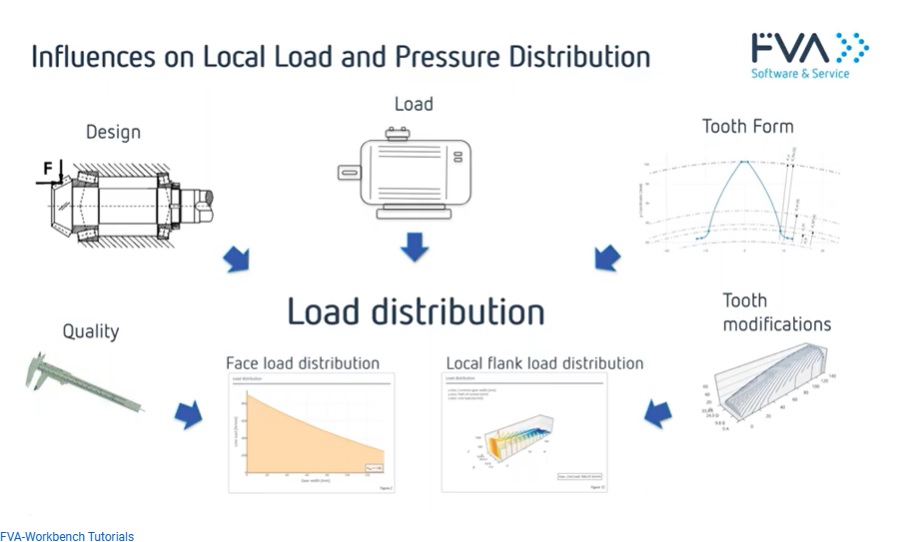Introduction
In July of 1999 the Safeco Field (currently T-Mobile Park) opened its doors as the new home of the Seattle Mariners (Figure 1). At that time, this first-of-its-kind stadium designed with a retractable roof would allow the Mariners’ fans to enjoy the ball game even during inclement weather.
The retractable roof is driven by 96 Sumitomo gearboxes. After over 24 years of service, a Sumitomo gearbox was returned for overhaul. The gearbox's condition is a testament to the importance of careful selection and maintenance, as it demonstrates the exceptional durability and craftsmanship of Sumitomo gearboxes, which can provide reliable operation for many years.
This paper examines the selection process, operation, maintenance practices, and state of the gearbox after over 24 years of operation. It is demonstrated that a quality product and careful consideration of all these factors are essential for a longer service life of the gearbox. Detailed information is provided on the operation of the gearbox, as well as the maintenance practices that should be taken to ensure its longevity. Finally, the paper examines the state of the gearbox after over two decades of use and how all these factors result in lowering carbon emissions.
Product Selection
Based on Sumitomo's load classification for selection (Figure 2), a service factor (SF) of 1.4 is required for heavy shock load and intermittent duty (3 hours per day) applications. SF is calculated as the capacity of the gearbox divided by the motor power. Considering a 10 HP motor, the gearbox’s capacity should be equal or exceed 14 HP. The Sumitomo gearbox model KHFJS-D4165-R1-62 was selected as it meets all requirements. A breakdown of the application’s requirements is laid out on the following sections.
 Figure 2: Load classification based on Sumitomo's experience.
Figure 2: Load classification based on Sumitomo's experience.
Application
The retractable roof is towed by 128 wheels powered by 96 10 HP electric motors [1] that travels through rails and wheels similar to those of a train (Figure 3). Under ideal conditions, the gearbox experiences uniform load. However, as the roof is meant to be used during inclement weather, the gearbox can experience heavy shock loads and variable loading due to wind speed.
Ambient Conditions
The gearbox installation is outdoors, which exposes the gearbox to changing weather conditions. The ambient temperature ranges from 35 to 76 °F (~2 to 24 °C), and the relative humidity is within standard limits.
 Figure 3: Retractable roof's wheel drive.
Figure 3: Retractable roof's wheel drive.
Hours of Operation Per Day
The deployment time ranges from 10 to 20 minutes depending on the speed of wind and other weather conditions [1], such as built-up snow that increases both the weight of the roof and the load on the gearboxes. In a worst-case scenario, tests may be conducted to ensure proper operation of the roof, which can result in operating the roof multiple times, with an estimated maximum time of operation of three hours per day.
Output speed
To safely move the retractable roof’s structure, an output speed of 28.2 rpm was calculated, requiring a 62 ratio at 1,750 rpm input speed. Motor speed and horsepower Based on the demand torque for the application, a 10 hp motor operated at 1,750 rpm was specified.
Mounting position and output connection
The gearbox is mounted horizontally using a flange that bolts onto the structure (Figure 4). It features Sumitomo's Taper Grip Bushing (TGB), a keyless output connection that eliminates the need for precision machining of the driven shaft during installation (Figure 5).
 Figure 4: Flange-mount Bevel Buddy Box in horizontal position. Left: side view. Right: back view.
Figure 4: Flange-mount Bevel Buddy Box in horizontal position. Left: side view. Right: back view.

Figure 5: BBB4 model with Taper Grip Bushing as output connection.
The flange-mounted gearbox supplies only torque with minimal axial or radial shaft loading. Bearings on the output shaft are only subjected to negligible runout. The input shaft uses a C-Face adapter and flexible coupling, resulting in an alignment-free input connection with no radial or axial loads applied on the input shaft.
Operation
From 1999 until 2014, the Seattle Mariners played 1,262 regular season games [2] (Figure 6). Even though Seattle has a reputation to be a rainy city, most games were played with the roof open. In this 15-year time period, only 173 games were played with the roof closed, and 104 times the roof was operated during the game. It can be concluded that the roof was deployed for game-related events an average of 18 to 19 times per year. If other reasons are considered (non-game events, field maintenance, roof maintenance, and training), roof deployments may vary from 250 to 400 per year.
The intermittent nature of the roof's operation helps prolong the lifespan of the gearbox. However, it's important to note that when the roof is operated in poor weather conditions, it can result in heavy shock loads that put a strain on the gearboxes. To account for this potential overload, the appropriate service factor was carefully chosen.
 Figure 6: Games with roof open by season from 1999 to 2012 [2].
Figure 6: Games with roof open by season from 1999 to 2012 [2].
Maintenance
Considering an ambient temperature range of 35 to 76 °F (~2 to 24 °C), it is recommended to use a gear oil with ISO viscosity grade of either 100 or 150 cSt (Figure 7). Mobile SHC 627 oil with viscosity grade of 100 cSt was used in the Sumitomo gearboxes, as this gear oil provides sufficient oil film thickness on hot days and does not affect start-up during cold days.
 Figure 7: Recommended oil viscosity for SM Bevel Buddybox and Cyclo.
Figure 7: Recommended oil viscosity for SM Bevel Buddybox and Cyclo.
The following practices are performed during maintenance:
• The oil is checked in all 96 gearboxes every 6 months.
• Every time the roof was deployed, maintenance personnel is located on each runway to check for
abnormal sounds, odors and leaks.
• If any issues were found, these were reported and addressed in a timely manner.
Sumitomo recommends changing the oil every 5,000 hours or every 2 years, whichever comes first. T-Mobile Park’s Maintenance Team diligently followed Sumitomo’s recommendation.
Sumitomo gearboxes are built to last
A couple of gearboxes were found leaking which prompted the Mariners’ stadium maintenance staff to reach out to Sumitomo to inspect them. It was recommended by Sumitomo’s Sales team to do a preventive inspection in order to avoid failure of the gearbox during service. The exterior of the gearbox does not show any defects other than the leakage found on a couple of units (Figure 8). The interior of the components showed only minor wear. The Cyclo reduction components (Figure 9) were found to be in an almost new condition. After over 24 years of gearbox operation, it is likely to find spalling on the eccentric cam or micro pitting on the disc lobes. In this case, none of these two failure modes was found, and the reduction components were deemed re-usable.
 Figure 8a: External condition of the gearbox. Back of the unit, no defects.
Figure 8a: External condition of the gearbox. Back of the unit, no defects.
 Figure 8b: External condition of the gearbox. Front of the unit, leakage on low-speed shaft seal and mild rust on the flange's mounting surface.
Figure 8b: External condition of the gearbox. Front of the unit, leakage on low-speed shaft seal and mild rust on the flange's mounting surface.
 Figure 9: Condition of the Cyclo discs. a) Cyclo discs' lobes show mild polishing. b) Low-speed shaft pin's contact surfaces' and c) eccentric bearing's outer race both show mild abrasion.
Figure 9: Condition of the Cyclo discs. a) Cyclo discs' lobes show mild polishing. b) Low-speed shaft pin's contact surfaces' and c) eccentric bearing's outer race both show mild abrasion.
As for the bevel gears, no failure modes other than minor abrasion was found (Figure 10). The bevel gears usually operate at lower speeds than the Cyclo portion, so the minor wear will not represent an issue. The bevel gears were also deemed re-useable.
 Figure 10a: Bevel gear set condition. a) bevel pinion shows mild polishing.
Figure 10a: Bevel gear set condition. a) bevel pinion shows mild polishing. Figure 10b: Bevel gear set condition b) bevel gear shows mild polishing.
Figure 10b: Bevel gear set condition b) bevel gear shows mild polishing.Aside from checking for the condition of the reduction components, it is a standard practice for Sumitomo’s Repair Team to do an overhaul of the unit. An overhaul would include the replacement of normal wear and tear items such as seals and bearings. Additionally, it was recommended to replace input and output shafts in order to avoid components with minor rust, in order to facilitate installation.
Keeping your operations green
As there is a global awareness over climate, companies are pushing towards reducing energy consumption to reduce carbon emissions. From the gearbox manufacturer’s side, a reliable Sumitomo gearbox, in combination with preventive maintenance practices, can result in reducing energy consumption by avoiding the manufacture and assembly of a replacement gearbox. As shown in this case study, there was no need to either replace the Sumitomo gearbox on this application, nor there was a need to remove it to repair / overhaul any gearbox in over 24 years of use.
As for the driven machine, the precision required in the manufacturing of drive components can lead to longer manufacturing times and increased energy consumption. However, the use of Sumitomo's Taper Grip Bushing can help reduce the energy consumption used in manufacturing in two ways:
1. No key is required (except for a few specific applications).
2. No special driven shaft tolerance is required.
As a result, commercially available shafting can be used, which removes two manufacturing operations and makes the manufacturing process more energy efficient.
The installation process also affects energy consumption. Sumitomo's Taper Grip Bushing makes installation quicker and easier by providing greater clearance between the driven shaft and hollow bore, eliminating the need for special tools. Additionally, only a small amount of anti-seize paste is required for dismounting the gearbox, which makes the product more environmentally friendly (Figure 11).
Finally, the use of Sumitomo's Taper Grip Bushing as an output connection reduces the failure rate and increases service time. In contrast, Keyed Hollow Bore installations have a small clearance between the hollow bore and driven shaft, which can result in fretting corrosion due to the rubbing of the driven shaft against the hollow bore. This can damage the hollow bore, driven shaft, and seals, leading to increased failure rates. Thanks to the friction operating principle of Sumitomo's Taper Grip Bushing, the hollow bore clamps onto the driven shaft, eliminating the risk of fretting corrosion and reducing the energy required to remove and replace the gearbox.
 Figure 11: Anti-seize paste used in a minimal surface area for Sumitomo's Taper Grip Bushing.
Figure 11: Anti-seize paste used in a minimal surface area for Sumitomo's Taper Grip Bushing.
Conclusion
After over 24 years in service, the condition of the gearbox was deemed re-usable. Seals and bearings were replaced as it is recommended during overhaul. Input and output shafts were recommended to be replaced in order to facilitate future installations.
The long service time of the gearbox was a result of:
- A deep understanding of the application, resulting on the proper selection of the gearbox.
- The excellence in maintenance practices that are reflected on the condition of the gearbox, as the reduction components are in excellent shape.
Due to the high quality of the Sumitomo gearboxes, rarely, or if ever, any issue was found during the maintenance inspections.
Proper selection and maintenance, in combination with high quality reduction components, are crucial for maximizing the gearbox’s service life and keeping your operations green.
References
[1] T-Mobile Park Facts & Ground Rules
MLB
https://www.mlb.com/mariners/ballpark/ground-rules
[2] Inside the Numbers on the Safeco Field Retractable Roof







